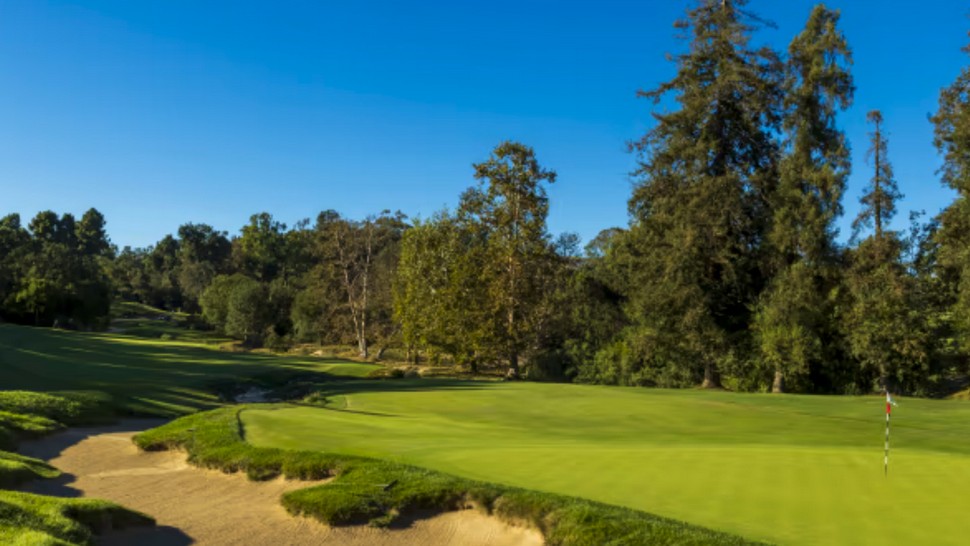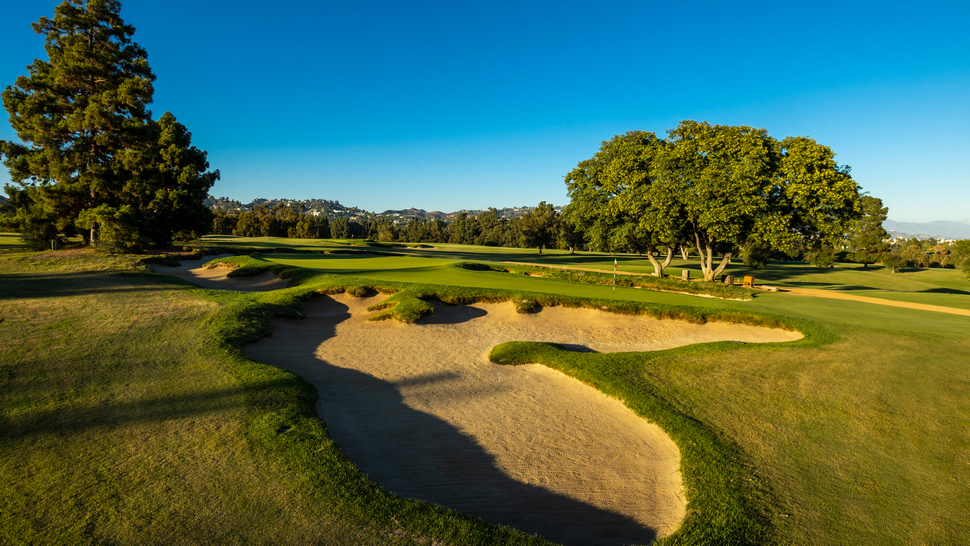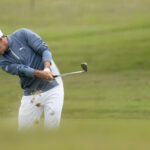LOS ANGELES, CA. Returning to the Los Angeles area for the first time in 75 years, Los Angeles Country Club’s North Course will be the venue for the 123rd U.S. Open.
The 1927 George Thomas designed course was updated in 2010 by architect Gil Hanse in concert with partner Jim Wagner and author / writer Geoff Shackelford.
The updated design brings to the forefront a number of key options which the six holes mentioned below provide.
***
1st Hole / 578 Yards / Par-5
George Thomas believed giving players an opportunity to get off to a good start was beneficial. The opening hole at the three Los Angeles area courses he designed with LACC / North, Riviera and Bel-Air — all begin with a tantalizing par-5.
The North’s starting hole encourages the big tee shot. Fairway bunkers are in play but if a player can hit the right side of the fairway and work the ball in a right-to-left fashion there will be additional yards to gain.
Even with a perfectly placed tee shot those opting to go for the green in two shots face a daunting challenge as the green sits on a diagonal and is well-protected by a bunker in the front.
Lofting a second shot to the green will require sufficient care to hit and hold the target.
Clearly, an eagle opportunity is possible and birdie more likely. But the 1st will not yield anything without the soundest of executions.

6th Hole / 330 Yards / Par-4
As the round progresses, players will come upon the 6th with its tempting side available to those who dare.
The tee shot is presented with a slew of options. The hole moves downhill and turns abruptly right. Players can take the safest of plays and hit for the widest portion of the fairway leaving themselves no more than 100 yards to the shallow green that is extremely lengthy.
The most risk-oriented play is taking the tee shot over the right-hand corner and attempting to find either the green or a fairway tongue area that gives open access to any pin position.
The 6th is reminiscent of Riviera’s famed 10th. Scoring situations can dramatically change from day-to-day depending upon wind directions and pin location.

7th Hole / 284 Yards / Par-3
LACC’s North Course has five par-3s — the most for any U.S. Open site since 1947.
The 7th has plenty of options in terms of tee and pin positions.
When played from the maximum rear teeing area, players will need to approach the target with a fairway metal club.
Players face challenges with a miss to either side. On the right bunkers await and the green has several key locations that will test putting skills.

14th Hole / 623 Yards / Par-5
There are three par-5 holes on the North Course and the 14th is likely the most exacting of them.
A fortress of bunkers guards the turning point on this dog-leg right hole. Players looking to take on that target line need to carry a tee shot in excess of 310 yards. Failure to do that can mean a most trying time to secure a par.
Those finding the fairway will discover the hole will not easily surrender unless the approach is wisely played to where the pin is situated. A good birdie opportunity is possible but not before the execution is demonstrated.. The green does have fall-off areas and those who opt to go for the green in two shots have to be very conscious of where the ball finishes when coming to rest.

15th Hole / 124 Yards / Par-3
The final par-3 at the North Course will create the most fanfare. The hole will be played at a far shorter distance for one of the rounds — approximately 80 yards.
The green features a narrow frontal tongue set on an angle from the tee. The putting surface is fiercely defended on all sides and the rear area fans out to a much wider landing area.
Controlling trajectory and spin is essential on this hole.
Nerves of all the contenders will be tested here.


Related: Rickie Fowler makes fast start at US Open with early move to top leaderboard
18th Hole / 499 Yards / Par-4
The finishing hole for any U.S. Open needs to be an extreme challenge that yields only to the finest of plays.
The 18th on the North Course does that exceptionally well.
The hole climbs uphill and although the drive zone is fairly wide it pays to be on the correct side in making the approach shot.
The green has a range of movements but nothing extreme. Generally, the hole plays into the prevailing wind and when skies are clear the setting sun can play a role too.
Claiming the U.S. Open trophy will be an arduous task and the person able to best handle the six holes mentioned will have a clear advantage over the others competing this week.

